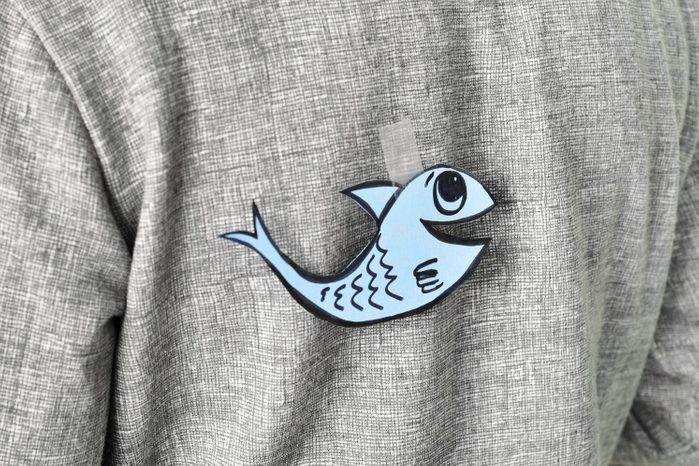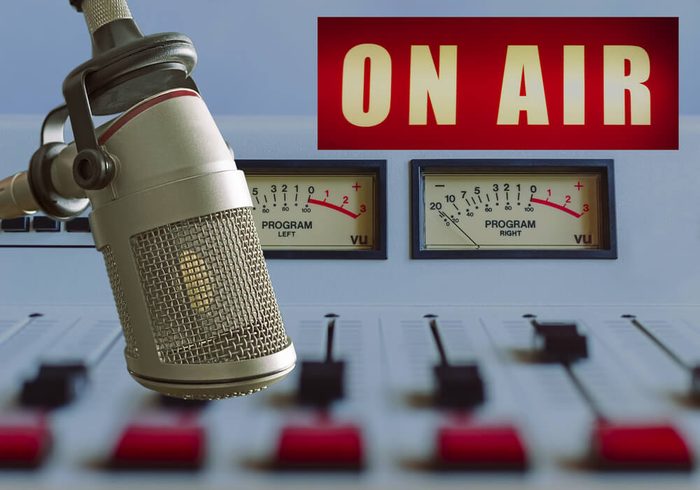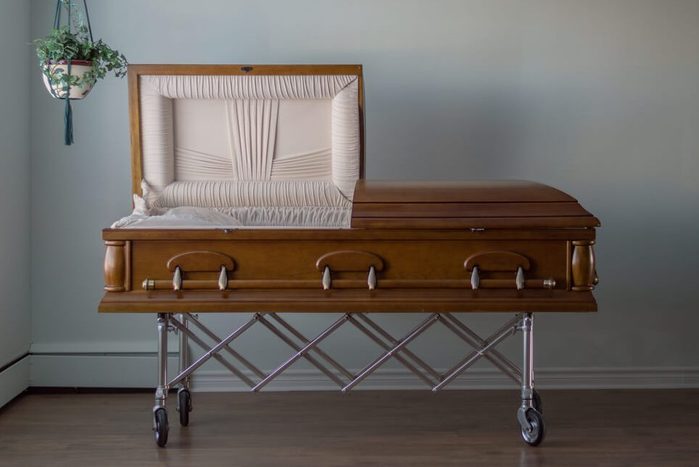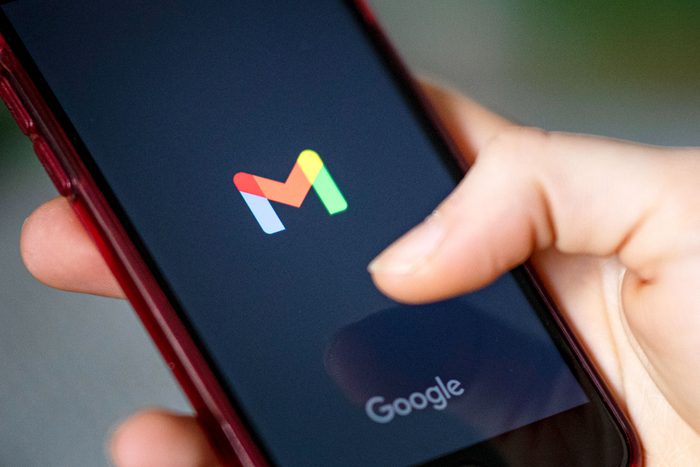These are some of the worst pranks gone wrong on April 1

12 April Fools’ Pranks That Went Horribly Wrong


The very first April Fools’ Day
There are many theories as to the origins of April Fools’ Day, but some historians believe the day originated in 1582 when France switched over to the Gregorian calendar, which changed New Year’s Day from April 1 to January 1. Back in those days, the news took a little longer to reach everyone, and those who were a bit slow on the uptake (celebrating New Year’s Day on April 1, for example) became the butt of pranks, including having paper fish glued onto their backs—because fish are easy to catch. To this day, people still refer to those who are easily fooled as “fish.” They would call them “gullible,” except—ahem—that word isn’t in the dictionary.

I’m really not a crook
On April 1, 1992, a man claiming to be Richard Nixon told NPR he would be running for president, then added: “I never did anything wrong, and I won’t do it again.” Despite the date, thousands believed it was actually Richard Nixon announcing another bid for the presidency. Of course, it wasn’t actually Nixon speaking, but that didn’t stop the outrage, and many began gearing up to protest.

Whoppers for southpaws
Turns out, your favorite fast-food chains have a history of pranks. On April 1, 1998, Burger King announced it would now offer a version of the Whopper that had been carefully designed for left-handed folks. The joke was on Burger King, however, when stores across the country were flooded with orders for the left-handed Whopper.

An April Fools’ cliff-hanger
In 2001, a DJ in England decided to prank his listeners on April 1 by broadcasting that a ship that looked suspiciously like the Titanic could be seen from the cliffs at Beachy Head in East Sussex. Hundreds of listeners believed him, trekking to the cliffs to catch a glimpse. Unfortunately, all the foot traffic caused a large crack in the cliff face, and a few days later, it fell into the sea.

Poisoned by DHMO
This is far from being a good April Fools’ joke: On April 1, 2002, a couple of Kansas City DJs announced the local water supply had been found to contain high levels of “dihydrogen monoxide” (DHMO), whose side effects included sweating, urination and skin-pruning. Hundreds of citizens flooded the water department and the police with distressed phone calls. Too bad dihydrogen monoxide is actually H2O—the chemical name for water. The DJs were widely criticized, and one government official even accused them of “terrorism.” In 2013, two Florida DJs pulled the same prank. The resulting clamor got the DJs yanked off the air and nearly saddled with felony charges.

Armed robbery is hilarious … or not
For April Fools’ in 2003, a clothing-store employee in Columbus, Ohio, decided to call her boss and tell him that someone was robbing the store at gunpoint. Before she had time to call him back and confess to the prank, her boss had called the police. Four patrol cars rolled up to the store. The employee was arrested for inducing panic.

Take us to your leader
On April 1, 2010, a newspaper in Jordan ran an article claiming a UFO had landed near the town of Jafr. It’s no wonder this was a prank gone wrong, as the mayor of Jafr’s responded by issuing an order to evacuate 13,000 people. Facing a potential lawsuit, the newspaper staff apologized publicly, saying that they “meant to entertain, not scare people.”

Perhaps murder isn’t a laugh riot
In 2013, Susan Tammy Hudson of Kingsport, Tennessee, called her sister on April 1 and said, “I shot my husband. I’m cleaning up the mess—let’s go bury him in Blackwater.” This was a prank gone wrong because though Hudson may have thought she was being funny, no one else did—and soon the police showed up. No charges were pressed after Hudson’s husband arrived home alive and well.

I swear I’m not dead
A text prank is less elaborate than this one: In 1708, Gulliver’s Travels author Jonathan Swift set up an epic April Fools’ prank by pretending to be an astrologer by the name of Isaac Bickerstaff. He published a set of predictions, the most notable of which was that a celebrity astrologer of the time, John Partridge, would die on March 29. On March 30, Swift circulated an anonymous account of Partridge’s death of fever. On April 1, someone knocked on the Partridges’s door to set up funeral arrangements. Partridge, of course, was alive and well, but for the rest of his life, he had to insist he was not dead. The prediction finally came true seven years later without Partridge ever finding out the real identity of Isaac Bickerstaff.

Pregnant pause
This may not be the best prank to pull on your boyfriend: For April Fools’ Day 2013, 18-year-old Tori Wheeler of Tulsa, Oklahoma, pranked her boyfriend, Derek Bauer, by pretending she was pregnant. Wheeler—upset that Bauer didn’t find her prank as funny as she’d hoped—ended up pulling a knife on him, and the police were called in to settle the matter. Predictably, Wheeler later said the knife was yet another prank. Don’t prank with knives, kids!

Mic drop!
Here’s another April Fools’ prank gone wrong: In 2016, Google, as an April Fools’ prank, added a “mic drop” button to its email program. When clicked, it sent a GIF to the recipients of the outgoing email and, here’s the kicker, literally disabled replies—in effect, shutting down the conversation (as mic drops do). But the big problem was that the “mic drop” button was right next to the “send” button, leading a number of hapless (and later, horrified) people to mic-drop their bosses, clients, spouses, children, friends and family. Although Google disabled the button, the damage was done. It was far from being a good office prank, since at least one individual reported getting canned thanks to Google’s jest.

The Great Blue Hill eruption
For April Fools’ Day in 1980, Boston TV news producer Homer Cilley (it actually rhymes with “silly”) produced a television broadcast about a hill in Milton, Massachusetts, that had begun oozing lava and spewing flames. He included fake warnings from then-president Jimmy Carter and real footage from Mount St. Helens eruptions that implied the Massachusetts volcano had fully erupted. “April Fool” read the card at the end of the segment, but hundreds of panicked citizens flooded law-enforcement phone lines anyway. Cilley was promptly fired for failing to exercise “good news judgment” and breaching FCC regulations.
Why trust us
Reader’s Digest has been telling jokes for more than 100 years, curated and reviewed over the last 20 years by Senior Features Editor Andy Simmons, a humor editor formerly of National Lampoon and the author of Now That’s Funny. We’ve earned prestigious ASME awards for our humor—including comical quips, pranks, puns, cartoons, one-liners, knock-knock jokes, riddles, memes, tweets and stories in laugh-out-loud magazine columns such as “Life in These United States,” “All in a Day’s Work,” “Laughter Is the Best Medicine” and “Humor in Uniform,” as well as online collections such as short jokes, dad jokes and bad jokes so bad, they’re great. You can find a century of humor in our 2022 compendium, Reader’s Digest: Laughter, the Best Medicine. Read more about our team, our contributors and our editorial policies.
Sources:
- History.com: “April Fools’ tradition popularized”
- DamnInteresting.com: “The Extraordinary Astrologer Isaac Bickerstaff”
- Grunge.com: “April Fools’ Jokes Gone Wrong Throughout History”
- Metro.co.uk: “April Fools’ Day: Five times practical jokes backfired horribly”
- National Geographic: “Gotcha! History’s Most Outrageous April Fools’ Jokes”
- NPR: “5 April Fools’ Pranks Gone Bad”




















